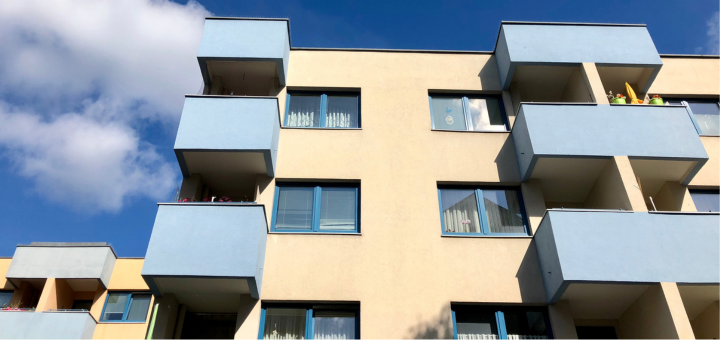Australia is suffering a housing appropriateness and affordability crisis. In this article we use the 2023 National Liveability Survey to explain how Australians selected ‘affordable decent housing’ as the single biggest inhibitor – and opportunity – to advancing quality of life across the Nation. The 2023 National Liveability Survey* was recently conducted to explore the values, experiences and future needs of Australians. The results highlight barriers to, and opportunities for, improving the liveability of Australia. This data is principally used as spatial benchmarking for councils and other organisations who subscribe to our Living in Place community survey.
Having access to ‘ affordable decent housing’ that is both stable and safe, sets a great foundation from which we can move forward with achieving higher level goals, improve our personal economic situation, social wellbeing and ultimately advance our quality of life.
Without it, without somewhere to call ‘home’, we cannot even fulfill our basic physiological needs such as shelter, warmth, and protection from the elements, let alone think about and act for the longer term.
In Australia, the issue of housing is particularly vexed. And it has come to represent so many things beyond its basic purpose. Socially, it is an intergenerational enabler and disabler. Economically, it’s a contentious asset class. High demand for housing is driven by our ageing population, an economy that favours working-age migration over productivity and cultural shifts that contribute to changes in household composition. Supply is impacted by many factors, including land constraints, tax laws that incentivise people with the means to accrue multiple houses, nimbyism and more recently labour and material shortages.
While these supply and demand issues aren’t new, their impact has been amplified by the rock and roll of COVID, the stimulus and inevitable inflation. So here we are, in the middle of a housing appropriateness and affordability crisis. The great Australian dream of owning a home has become a fantasy for some, and simple home security a challenge for many.
But what value do Australians place on the provision of ‘ affordable decent housing’ when they’re thinking about what makes somewhere a good place to live, and how do we experience housing where we live?
In this the second article exploring the 2023 National Liveability Survey data we look at:
- The value and experiences of ‘ affordable decent housing’ in Australia, and across Australia.
- How home ownership impacts Australians views on housing.
- The impact that home ownership has on other factors that contribute to a high quality of life, including the ability to meet financial commitments, and mental health.
Other articles in this series look at liveability in relation to:
Why is housing so important to liveability?
In the National Liveability Survey, we understand views on housing by using the term ‘ affordable decent housing’. We do this because understanding the provision of ‘ affordable decent housing’ goes well beyond bricks and boards. It contextualises the community’s view on this topic with two additional features – both of which are critical to informing public policy and private sector directions: the perception of value (represented in the attribute as ‘ affordable’) and quality (represented as ‘ decent’).
The Australian experience of ‘affordable decent housing’

Source: https://views.id.com.au/australia
In the 2023 National Liveability Survey, 43% of respondents nominated ‘ affordable decent housing’ among their most important items that contribute towards making somewhere a good place to live. It was the third most important attribute overall. But despite its critical importance, Australians – on the whole – rated their local areas ability to deliver ‘affordable decent housing’ an average of 4.9 out of 10. This is a very poor outcome, and the worst of all 16 attributes deployed in the survey.
Ultimately, this combination of high importance and poor local area experiences determines that access to ‘ affordable decent housing’ is the single biggest inhibitor to advancing quality of life in Australia.
This is especially the case for younger Australians, those living in inner city metropolitan areas and renters.
People aged 18-34 place higher value on housing than older age groups. They also report poorer local experiences. This is probably due, in part, to a higher portion of this age group being renters. We explore the specific experience of people renting in more detail below.
Those living in regional Australia also value ‘ affordable decent housing’ more than those in metropolitan areas (50% vs 45%). And, they report slightly less positive local area experiences with in comparison to those in metropolitan Australia (4.7/10 in regional Australia vs 4.9/10 in metropolitan Australia).
When we break up the data across metropolitan areas, a more nuance story emerges. People in the Outer Suburbs rate their local experience of housing as considerably more positive than the national average (5.4 vs 4.9), whereas those in the Inner City have the poorest experience of housing (4.4/10). ‘ Affordable decent housing’ is often the only attribute where those living in the outer suburbs report more positive experiences than their inner city and middle suburban counterparts. But given these communities are more likely to have mortgages (rather than rent or fully own their home), we expect that a high interest rate environment – compounded by cost-of-living pressures – will contract outer suburban residents’ views in this regard in future years.
The impact that ‘how we live’ has on our values and experiences of housing
Understanding how residents live can uncover deeper insights into community experiences with housing. The relationship between housing and quality of life is influenced by factors like:
- Home ownership status
- The number of people in a household
- The types of dwellings people live in
The National Liveability Survey data reveals that renters place almost twice as much value on access to ‘ affordable decent housing’ (65% selected it among their most important items) than those who have a mortgage (40%) or fully own their home (38%). It also found that people who rent report much poorer local area experience of ‘ affordable decent housing’ (4.4/10) that those with mortgages (5.0) and those who fully own (5.1) their homes. This outcome quantifies that renters are particularly vulnerable, and that their ability to access ‘ affordable decent housing’ has a significant impact on their quality of life.
Take a look at how the City of Ipswich (QLD) is using Living in Place data to better understand their resident experiences of housing and its impact on the city’s liveability.
The National Liveability Survey confirms that home ownership impacts other domains, in particular financial circumstances and mental health. For example, 41% of renters reported that they are ‘ sometimes’, ‘ often’ or ‘ always’ late meeting financial commitments in comparison to 20% who full own their home. Renters rated their mental health an average of 7.1 out of 10 in comparison to 7.7 for those who fully own their home.
Summary
The provision of ‘ affordable decent housing‘ poses the biggest obstacle (and opportunity) to increasing Australia’s liveability. In particular, young people, those living in the inner city and renters are more likely to have less positive experiences in accessing housing. How we live has a strong bond with how we feel about other core elements related to a high quality of life, including our financial wellbeing and mental health.
* The 2023 National Liveability Survey was conducted by the .id Community Views social research team in partnership with Ipsos Public Affairs . Please get in touch (views@id.com.au) if you’d like to understand how ‘affordable decent housing’ is experienced where you live. Access more information about the survey methodology here .
Further reading…
How Councils can influence affordability housing eBook.
This article from PEXA speaks to new solutions that may assist with Australia’s housing affordability crisis.










